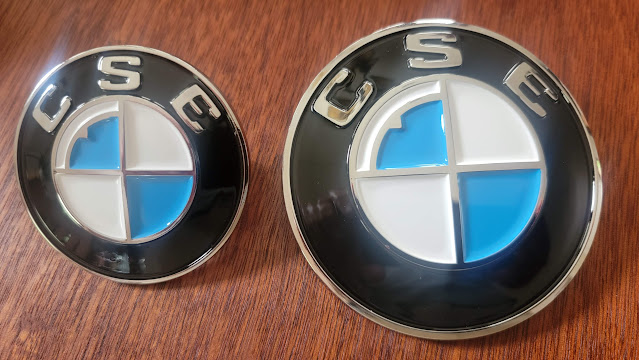We be Charging
The EV conversion is basically done now. Last week I had some problems getting the car to charge but now that's fixed and the car charges perfectly. With that, all my EV systems are working and there really isn't much more EV-related left to do.
 |
| Charging the car for the first time |
A little background on how electric cars charge. Most people think the charger is the unit on the wall or at the public charging station and you just plug the car into that and it feeds electricity to the batteries. That's kinda true but also inaccurate.
In truth, the charger is in the car. The "charger" on the wall of your house or in the public parking lot is actually a fairly dumb unit called an "Electric Vehicle Supply Equipment" or EVSE. For the most part, it doesn't have any real brains. Basically, it's a switch with a plug. That plug is defined by a standard called J1772. (Note: I'm only discussing AC charging using J1772 here. There are other plug standards and DC/DC fast charging but I don't support any of that in my BMW conversion so I'm skipping it. Read up on CHAdeMO and CCS if you want a broader understanding.)
 |
| A simple diagram showing that the charger is actually in the car. This picture fails to show the important BMS. |
When the EVSE isn't plugged into a car there is no electricity at the plug. When it is plugged into a car it sends a low (12v) voltage signal onto small the "proximity" wire, telling the car "hey, you're plugged in". At that point, it is up to the car to decide if it wants any juice, and at what rate.
The car not only has an onboard charger, it also has a Battery Management System or "BMS" that looks at the state of every cell in the battery pack and decides how much, if any, current it wants to allow into the car from the grid. Assuming it is OK to charge, when the BMS sees the proximity signal from the EVSE it needs to tell the onboard charger in the car "hey, get ready for some A/C current". Then it sends a signal through another wire on the J1772 plug, called the "pilot" that tells the EVSE to turn on its switch (close its contactors) and send some AC current.
 |
| The J1772 plus has 5 wires -- Two hots for 240 VAC, an AC ground, and small signal wires for proximity and pilot |
Unlike the proximity signal, the pilot signal isn't just straight voltage. It is a Pulse Width Modulated (PWM) signal that varies depending upon how much current the car says it can take. The EVSE reads that signal and sends the appropriate amount of Alternating Current (AC) to the car's onboard charger.
The problem is, the grid is sending AC but the batteries in the car are Direct Current (DC). The onboard charger's job is to convert from AC to DC to charge the batteries. All the while, the BMS is watching the battery cells and communicating with the EVSE and the charger to manage the charge rate. The BMS watches temperature, voltage, open resistance, and current. It has circuitry that can shunt certain cells off that have more charge than other cells, allowing the low cells to continue charging and catch up. This is called "balancing" and is important for the long term health of the battery pack.
 |
| Live cell voltages from the BMS, charging at 10.1 amps |
All this is just a long way of saying that a lot of stuff has to be properly wired and configured in order for charging to actually happen. And I had one thing wrong.
I had properly wired up all the cell taps and thermistors to all the batteries. This represents 11 wires to each Tesla battery module (so 11 x 14 = 154 wires there). I tested each of these manually with a multimeter before plugging them into the BMS. I also wired up the current sensor and the 12v wiring for the BMS, as well as the CANbus and J1772 pilot and proximity wires. Or so I thought.
 |
| Cell tap voltages and thermistor resistance values manually checked |
It turns out that the pin in a Deutsch connector for the proximity wire wasn't clipped in all the way, preventing the car from knowing it was plugged in. Once I found and fixed that, the BMS did its thing and everything worked perfectly.
 |
| This EVSE has a nice display showing the incoming current, voltage, power used, and time spent charging |
I was pleased to see that when the car started charging it turned on the water pumps for cooling the charger and the batteries. I still have some 12v wiring to debug and finish (the fan never came on) but I'm basically done.


